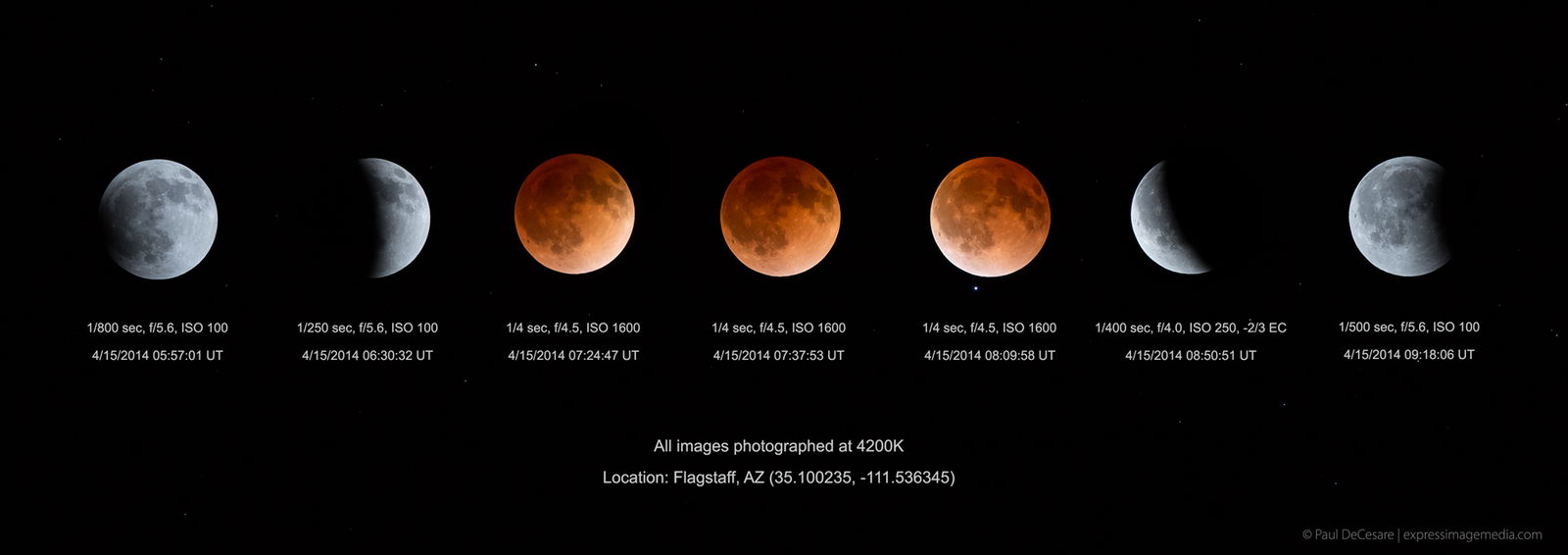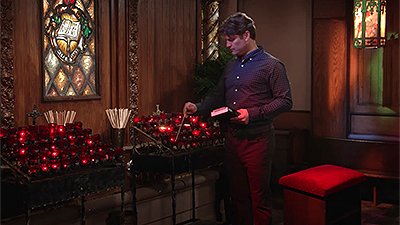
Cosmos Review: “The Electric Boy”
Episode Ten of Cosmos: A SpaceTime Odyssey
Cosmos Articles and Discussion Guides
See Cosmos: A SpaceTime Odyssey for reviews of other episodes and discussion guides for further study.
“The Electric Boy,” episode ten of Cosmos: A SpaceTime Odyssey, in a radical departure from the pattern in previous episodes, confined the majority of its time to observational science—the observable relationship between electrical and magnetic fields and their application to the communication industry. The episode was not without evolutionary speculation presented as fact—the notion that birds evolved from dinosaurs—but most of the program focused on the experimental science that laid the foundation for modern light-speed communication technologies.
Michael Faraday and James Clerk Maxwell
Two Bible-believing Christians—Michael Faraday and James Clerk Maxwell—took center stage in the program. Cosmos host Neil deGrasse Tyson said Faraday “took his family’s fundamentalist Christian faith to heart” and that it remained a “source of strength, comfort, and humility for him.” What he did not say is that Faraday’s Bible-based faith in the reality of our all-powerful Creator and Savior Jesus Christ (Colossians 1:16–17) was the reason Faraday believed that the invisible forces he studied—like electricity and magnetism—having all been created by God—were interrelated, a concept called “unity of forces.” Therefore, Faraday based his testable scientific predictions on biblical principles.
Maxwell and Faraday saw no conflict between the science they devoted their lives to exploring and the Creator God they trusted and served.
Faraday, though lacking formal education, was a voracious reader and a keen observer. While working as Sir Humphry Davy’s assistant, he investigated the properties of electricity and magnetism, discovering their interaction and the existence of electromagnetic fields—the property that allows them to exert their effects to objects without “touching” them. Later Maxwell expressed Faraday’s discoveries mathematically and, realizing something else was needed for one of the equations to correctly describe the behavior of electromagnetic fields, insightfully laid the foundation for the fact that electromagnetic fields move outward at the speed of light—the property that makes radio, television, and other practically instantaneous communication across great distances possible.
The program closed with a famous Faraday quotation: “Nothing is too wonderful to be true if it be consistent with the laws of nature.” The mystery of how invisible electricity produces invisible magnetic force must have indeed seemed too wonderful to be true to many people of the 19th century. But Michael Faraday understood that the Author of His salvation is our wise, consistent, all-powerful Creator God. His belief that God was the Creator of all the scientific phenomena he studied helped him realize the various forces God created would be interactive and consistent with each other. There had to be a “unity of forces” because there was only one all-powerful Creator. Faraday understood that God was the Creator of the laws of nature, the laws of science that he was discovering through experimentation and observation.
James Clerk Maxwell’s mathematical genius combined with Faraday’s discoveries laid the foundation for much of the technology that shapes our lives today. But Maxwell was also an outspoken opponent of Darwin’s increasingly popular evolutionary claims. Maxwell furthermore used his mathematical genius in the fight against evolutionary thinking in astronomy, demonstrating scientific flaws in LaPlace’s nebular hypothesis of how the solar system could have formed through natural processes. Maxwell and Faraday saw no conflict between the science they devoted their lives to exploring and the Creator God they trusted and served. They understood that because God was the Creator, they could expect the natural world to behave consistently and follow the scientific laws they were discovering.
Birds and Dinosaurs
During the Cosmos episode, host Tyson mentioned that birds also use magnetic fields to navigate all over the globe. Tyson described birds as the “last living descendants of dinosaurs.”1 The CosmosQuest discussion guide authored by Cosmos producer/creator Ann Druyan states, “While humans did not discover the existence of fields until Faraday’s breakthrough, other living things had been using them as navigational aids for millions of years.”
Evolutionists assume our existence and the existence of birds must have an evolutionary explanation. Yet molecules-to-man evolution—depending as it does on both the spontaneous emergence of life from non-living elements and the evolution of organisms into new, more complex ones—demands that we believe things that violate the laws of nature (e.g., law of biogenesis). Evolutionary beliefs about our origins would require that the laws of nature operated differently in the past. Conversely, biblical belief in creation is consistent with the observable laws of nature—life only comes from living things, and organisms reproduce and vary only within their created kinds.
In God’s Word we learn that God created birds on Day Five and land animals on Day Six of Creation Week, about 6,000 years ago. Therefore they cannot be related through evolutionary descent. The study of living things does not demonstrate any way that one kind of animal—like dinosaurs—could acquire the genetic information to be transformed into a completely different kind of animal like a bird, no matter how many millions of years it had available.
God did indeed equip birds and many other animals with a seemingly uncanny ability to navigate. Scientists are only beginning to understand the many clues animals use to find their way. Many of them can detect their place in Earth’s magnetic field and plot their path accordingly. Animal navigation is very complex and depending on the animal, it may involve orientation to the Earth’s magnetic field, the sun or stars, polarized light, and other visual or olfactory clues. This is an example of God’s design that modern man is only beginning to understand. Yet whether we understand the complex mechanisms underlying these abilities or not, their existence is not evidence of evolution.
Science Education
Michael Faraday and James Clerk Maxwell both lived lives of service to Jesus Christ through leadership in their churches and communities. As scientists they were studying the creation God made. Expanding his early employer Sir Humphry Davy’s practice of making science accessible to the public, Michael Faraday in 1825 started the Royal Institution’s tradition of annual Christmas science lectures and encouraging their attendance by children.

After 25 years of making science accessible to the public through afternoon lectures, the Royal Institution began, at the behest of Michael Faraday, annual Christmas science lectures aimed at “a juvenile auditory.” This was perhaps the first effort to make science education popular for children. Image: Royal Institution
Like today’s educational programming, the Royal Institution lectures provided science education to children. As the Cosmos program took a visual hop through history noting prominent presenters at these events, we see the devout creationist Christian Faraday himself featured in 1855, followed by a parade of prominent evolutionists: evolutionary astronomer Robert Stawell Ball, eugenics proponent Julian Huxley, evolutionary anthropologist Desmond Morris (who rather than addressing the biblical account of how suffering entered the world says the Christian God must be a “monstrous designer”),2 evolutionary naturalist and Darwinian TV promoter David Attenborough, and outspoken atheist Richard Dawkins. While any program presenting the story of the people and experiments responsible for our modern understanding of electromagnetic fields must allow that two Bible-believers—Faraday and Maxwell—were the pioneers that taught us how to harness the electron to serve our needs, clearly the program’s writers sought to depict the evolutionary path “real” science took by featuring a series of popular personalities who have rejected the Creator, our Lord Jesus Christ, whose Word and creative work has inspired so many great scientists like Faraday and Maxwell.
Further Information
- Can Bible-Based Predictions Lead to Scientific Discoveries?
- Michael Faraday—God’s Power and Electric Power
- James Clerk Maxwell (1831–1879)
- Do Tacked-on Chicken Tails Tell How T-rex Walked?
- De-Nyeing Science
- How a Multitude of Homing Pigeons Vanished
- Honeybees Navigate with a Map of Polarized Light
- Did Dinosaurs Turn into Birds?
- Lizard Breath Fails to Support Kinship with Birds
Footnotes
- For more information on the problems with birds evolving into dinosaurs, see Kyle Butt, “Science Can No Longer Stomach Dinosaurs-to-Birds Theory,” Apologetics Press, 2012, https://apologeticspress.org/science-can-no-longer-stomach-dinosaurs-to-birds-theory-1633/.
- “A Toast to Darwin,” The Critical Thinker (blog), December 31, 2008, https://thecriticalthinker.wordpress.com/tag/desmond-morris/.
Recommended Resources

Answers in Genesis is an apologetics ministry, dedicated to helping Christians defend their faith and proclaim the good news of Jesus Christ.
- Customer Service 800.778.3390
- © 2025 Answers in Genesis





